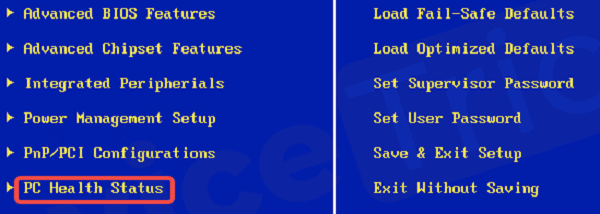
Monitoring the temperature of your motherboard is essential for ensuring optimal performance and preventing overheating, which could lead to hardware damage or system instability. In this guide, we'll explore several methods for checking motherboard temperature, including using specialized software like Driver Sentry.
1. Why Monitor Your Motherboard Temperature?
The motherboard’s temperature is influenced by various factors, such as the ambient temperature of the room, the workload of the system, and the efficiency of the cooling system. While most users focus on monitoring the CPU or GPU temperature, the motherboard's temperature is equally important. High motherboard temperatures can lead to:
Hardware failures: Excessive heat can cause components like capacitors or voltage regulators to malfunction.
System instability: Overheating can cause the system to crash or freeze.
Reduced lifespan: Prolonged exposure to high temperatures can shorten the life of the motherboard and its components.
To avoid these issues, it is essential to check the temperature regularly and take corrective actions if necessary.
2. Use Driver Sentry to Monitor Motherboard Temperature
For more advanced monitoring, professional software can provide detailed temperature readings, including motherboard temperature. One highly recommended tool for this purpose is Driver Sentry.
Driver Sentry is a comprehensive system utility that helps you monitor and update your system drivers, but it also provides valuable hardware monitoring features. It allows you to check the temperatures of various system components, including the motherboard.
Steps to Check Temperature Using Driver Sentry:
Download and Install Driver Sentry: Download the latest version of the software. Install it by following the on-screen instructions.
Open the Software: Once installed, launch Driver Sentry from the desktop or Start menu.
Navigate to the Hardware Monitoring Section: In the main dashboard, find the section dedicated to Hardware.

Check the Motherboard Temperature: In this section, you should see a list of your hardware components, including the motherboard. Driver Sentry will display the current temperature of the motherboard, often along with the temperatures of the GPU and HDD.
Driver Sentry's intuitive interface and robust monitoring capabilities make it an excellent choice for users who want a more detailed view of their system's health, especially in terms of temperature.
3. Check Motherboard Temperature Using BIOS/UEFI
The most straightforward way to check the motherboard's temperature is through the BIOS or UEFI (Unified Extensible Firmware Interface). These firmware interfaces give you direct access to hardware health data, including temperature readings.
Steps to Check Temperature in BIOS/UEFI:
Reboot your system: Restart your computer and press the designated key (usually F2, Del, or Esc) to enter the BIOS/UEFI setup.
Navigate to the Hardware Monitor or System Health section: Once inside the BIOS, look for a tab or menu labeled Hardware Monitor, PC Health Status, or something similar. This menu will display various system parameters like CPU temperature, fan speeds, and motherboard temperature.

Look for motherboard temperature readings: In this section, you should see the temperature of various components, including the motherboard. It might be listed as "M/B Temperature" or "System Temperature".
Exit BIOS/UEFI: After you have checked the temperature, you can exit the BIOS by pressing the Esc key and selecting the option to exit without saving changes.
This method is simple but has limited functionality. If you want continuous monitoring or more detailed data, it's recommended to use Driver Sentry for real-time monitoring.
4. Use Your Motherboard's Manufacturer Software
Many motherboard manufacturers, such as ASUS, MSI, and Gigabyte, offer proprietary software for monitoring hardware performance. These utilities often provide more detailed temperature readings and other system information.
For example:
ASUS AI Suite: For ASUS motherboards, the AI Suite software provides real-time monitoring of CPU, GPU, and motherboard temperatures, as well as the ability to adjust fan speeds.
MSI Command Center: MSI users can use the Command Center to monitor temperatures and tweak system settings.
Gigabyte EasyTune: Gigabyte's EasyTune software offers real-time monitoring of system health, including the motherboard temperature.
These programs can also be used to adjust fan speeds and perform other optimizations.
5. Conclusion
By using the methods above, you can easily track your motherboard's temperature and prevent potential overheating issues. If the motherboard temperature remains consistently high, it's recommended to seek assistance from a professional. Regular temperature checks will help ensure that your system operates at its best.
See also:
How to Fix Black Screen with Cursor Issue in Windows 11
How to Fix Scanner Not Working Issues